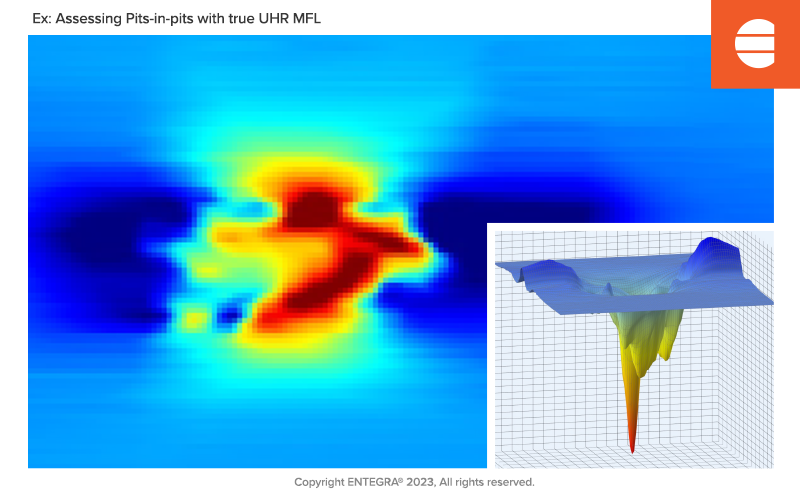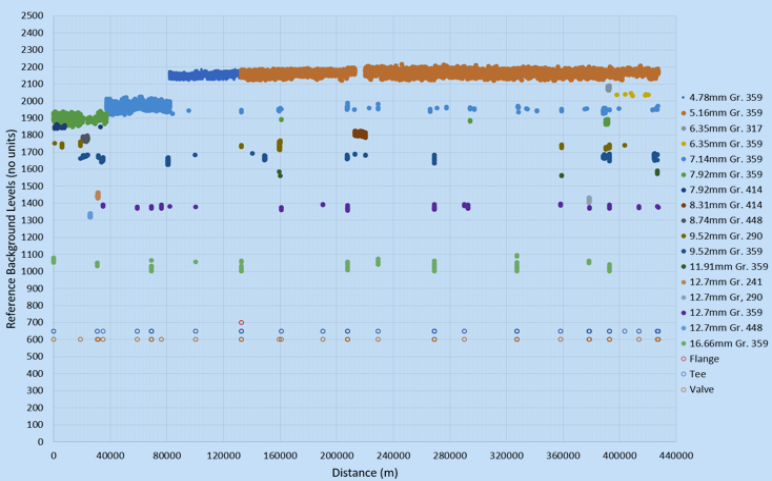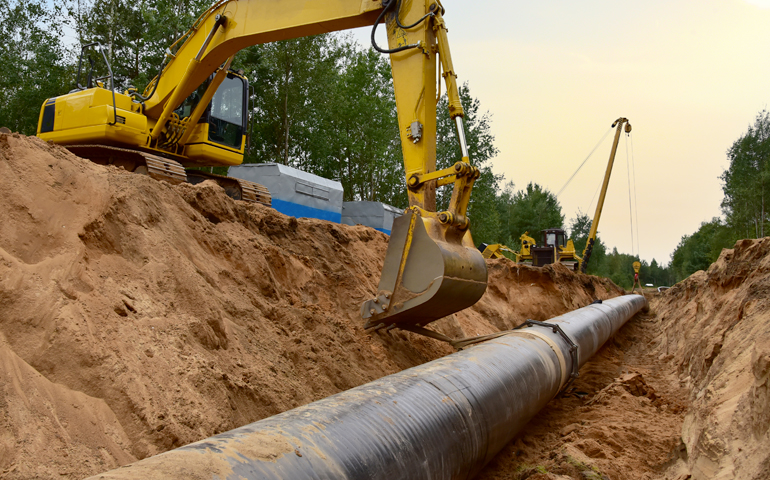
Here’s How Inspection with True UHR Exposes Pits-in-pits
Pits-in-pits consistently rank as a top pipeline integrity threat, due to their complexity.
Of the many anomalies you need to monitor on your pipeline, pits-in-pits can be one of the most problematic. Pipeline operators consistently rate pits-in-pits as a top integrity threat, but because they are so small and potentially masked by the larger area of metal loss in which they’re embedded, the true nature of pits-in-pits can be hard to decode.
The term pits-in-pits describes pinholes in larger areas of lighter metal loss. Since pinholes are, by definition, 10 mm in size or less (geometric parameter A equals the greater of wall thickness or 10mm), it’s easy to understand how pits-in-pits can be missed or mischaracterized in a typical ILI analysis. Ultra-High Resolution (UHR) MFL ILI tools deploy a denser array of sensors and higher sampling rate which are particularly useful in sizing and characterizing pits-in-pits. This more robust data, coupled with experienced and multi-tier data analysis, makes it possible to understand these often-elusive anomalies reliably and efficiently.
Characterizing depth to drive decisions
With any type of pits-in-pits, proper characterization of depth is vital in identifying the need for — and urgency of — repair. Yet this is the very thing that can be so difficult to “tease out” within pits-in-pits. UHR MFL ILI makes it possible to understand the size and shape of pits-in-pits, in order to assign them a proper depth. Other leading MFL systems struggle to see the detail required to accurately profile these features, often leading to a mischaracterization of the anomalies actual depth. Only true UHR technology backed by an experienced data analysis team can decipher the nuance of these potentially injurious features.

Pictured above: Other leading MFL systems struggle to see the detail required to accurately profile these features, often leading to a mischaracterization of the anomalies actual depth. Only true UHR technology backed by an experienced data analyst team can decipher the nuance of these potentially injurious features. Additional real-world examples comparing UHR MFL ILI capabilities in detecting pits-in-pits versus standard ILI tools can be viewed here.
UHR MFL ILI: The right tool for characterizing pits-in-pits
UHR MFL ILI tools from ENTEGRA® represent the latest in ILI capabilities. With a high sampling rate and high density of all tool sensor types including primary corrosion sensors, ID/OD discriminators, and caliper sensors, UHR MFL ILI tools capture the level of detail necessary to properly size and characterize pits-in-pits. Able to distinguish pits stacked on top of each other and pinhole anomalies as small as 3 mm x 3 mm embedded in larger areas of lighter metal loss, UHR MFL ILI tools provide an unprecedented view of pits-in-pits. When this comprehensive data set is then interpreted under the experienced eyes of trained data analysts, the information gathered by UHR MFL ILI tools becomes even more insightful. With pits-in-pits properly characterized and contextualized, you can make more informed decisions about your pipeline.
Learn more about how ENTEGRA UHR MFL ILI technology and human-powered data interpretation help reveal a more complete picture of pits-in-pits to help protect your pipeline’s integrity. Fill out the form below to download our paper presented at PPIM 2023: Applying Ultra-High-Resolution MFL to Achieve a Better Integrity Assessment of Pits-in-Pits.




